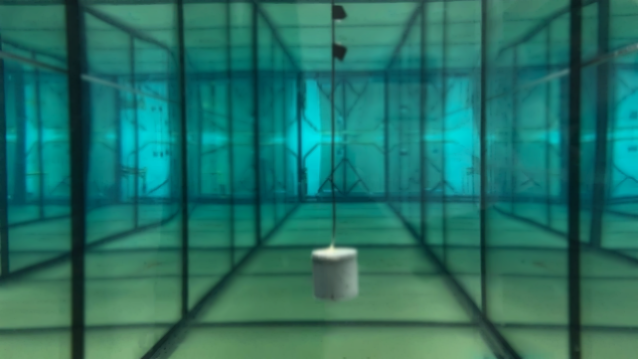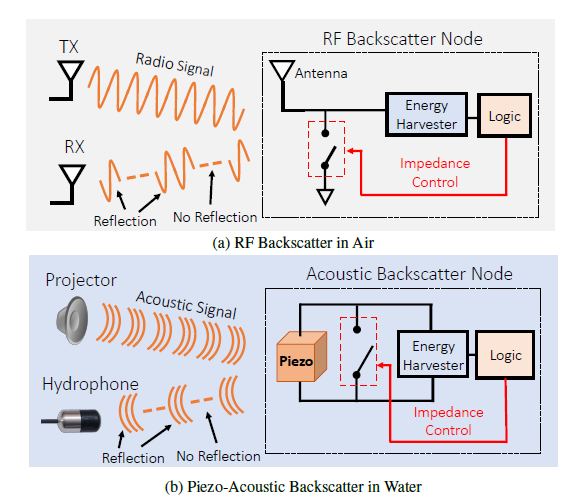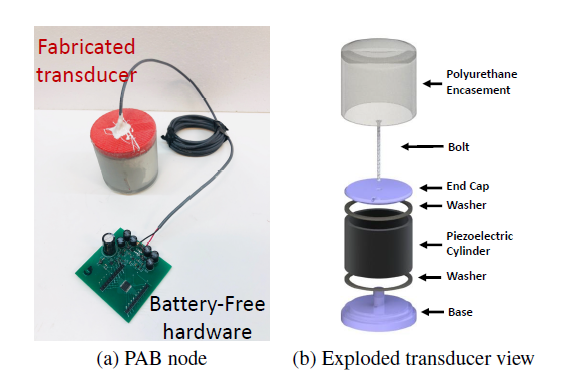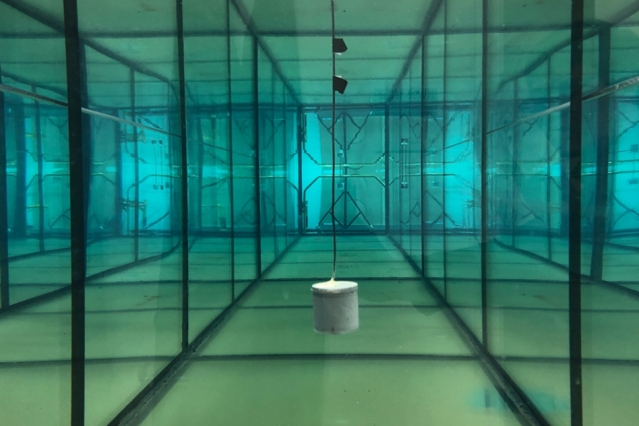Energy Harvesting Underwater
Article By : Bill Schweber

A novel acoustic-based backscatter design offers an innovative scheme for underwater energy harvesting and data transmission.
I’m always interested in the creative approaches that engineers and others develop for energy harvesting. Of course, while there’s great incentive to do so — energy harvesting has the glamour appeal of “something for nothing” — the reality is that it often takes a lot of work and cost to develop. Still, it can solve some otherwise intractable problems by providing power where primary batteries alone (or an AC line) are impractical.
That’s why a recent study by a team at MIT is fascinating. Not only did the researchers use a clever “twist” to harvest the energy, but they also tightly integrated the harvesting scheme with the data reporting itself. The team combined two very different phenomena — the piezoelectric effect and backscattering — to provide a modest data-rate, battery-free underwater sensor and data link, which they call a Piezo-Acoustic Backscatter (PAB) system. Backscatter itself is a well-known technique often used with passive RFID and other systems; it uses directed, impinging energy to stimulate, power, and provide a response, usually in the electromagnetic RF world, Figure 1.

Figure 1: There’s a close analogy between RF and Piezo-Acoustic Backscatter (PAB): (a) shows how radio backscatter can communicate bits of zero and one by controlling the antenna impedance switch; (b) shows how PAB system communicates bits of zero and one by controlling the piezoelectric impedance switch. Note that in the absorptive states, the sensor can harvest energy. (Image source: MIT)
In the MIT team’s PAB system, a transmitter sends directed acoustic (pressure) waves through water toward a submerged piezoelectric sensor and circuit that has stored the sensed data — which could be water temperature, flow, salinity, or other parameter of interest. This submerged node has a circuit board that houses a piezoelectric resonator, an energy-harvesting unit, and a microcontroller, Figure 2. When this energy wave hits the sensor, the piezo material vibrates and stores the resulting electrical charge — that’s the beginning of the energy-harvest cycle. Next, the sensor uses that stored energy to reflect or to not reflect a wave back to a receiver. The receiver sees a reflection as a 1 and a non-reflection as a 0 — and can so decode the serial data stream.

Figure 2: Mechanical and hardware fabrication: (a) shows the mechanically fabricated transducer with the battery-free, analog-digital hardware design; (b) shows the exploded transducer view. (Image source: MIT)
The relationship between the piezo element as harvester and as receiver/transmitter is tightly integrated. When the sensor wants to send a 0 bit, the transmitter sends its acoustic wave toward the node. The piezoelectric resonator absorbs the wave and it deforms (reorients) slightly — resulting in the generation of a tiny amount of storable energy which can later be harvested. Since the piezo element absorbs the impinging energy, the receiver sees no reflected signal and decodes a 0.
However, the action/reaction changes when the sensor wants to send a 1 bit. Again, the transmitter sends an acoustic energy wave. But now, the microcontroller uses the stored charge to send a voltage pulse to the piezoelectric resonator. That pulse voltage affects the piezo material’s structure such that it prevents it from deforming. Instead, the material now reflects the incident wave back to the receiver where it is sensed and decoded as a 1.
When I saw this paper, my initial thought was that the actual data would be painfully slow, on the order of a few bits/sec (which is still useful in many sensor applications). But in tests at a large MIT water tank, Figure 3 (not the same as the ocean, but still a starting point) they achieved rates up to 3 Kbps and distances up to 10 meters, both of which are respectable accomplishments.

Figure 3: The system being evaluated in the underwater MIT test tank. (Image source: MIT)
“Once you have a way to transmit 1s and 0s, you can send any information,” said co-author Fadel Adib, an assistant professor in the MIT media lab and the department of electrical engineering and computer science and founding director of the Signal Kinetics Research Group. “Basically, we can communicate with underwater sensors based solely on the incoming sound signals whose energy we are harvesting.”
At the time of their presentation, during SIGGRAPH 2019 (held in August), the team had not yet fielded the system in the ocean — which is a nasty operating setting in many electrical, electronic, and environmental ways. Even the salinity of the ocean varies from a typical value of 35 grams of dissolved salts in each liter (approximately 3.5%, or 35 parts per thousand) with a normal range of 33–37 grams per liter. There are also distinct underwater “rivers” of higher or lower salinity flowing through a region causing salinity impedance discontinuities which affect energy paths.
The MIT team’s highly readable paper has a refreshingly short title “Underwater Backscatter Networking” and won the conference’s “best paper” award. It fully details their work which is sponsored in part by the U.S. Office of Naval Research; there’s also a posted video here.
What’s the most interesting, unique, or unusual energy-harvesting design you have seen that has actually been tested, not just proposed?
References
- National Oceanic and Atmospheric Administration, National Weather Service, “Sea Water”
- NASA, “Salinity”
- Sea Surface Salinity Remote Sensing at CATDS Ocean Salinity Expert Center (CEC-OS), “Salinity Distribution at the Ocean Surface”